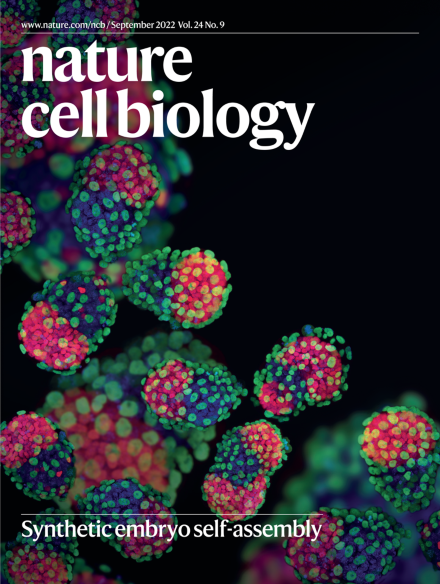一个全面的tRNA伪尿嘧啶图谱揭示了依赖于人类独立伪尿嘧啶合成酶的靶标。
IF 19.1
1区 生物学
Q1 CELL BIOLOGY
引用次数: 0
摘要
伪尿嘧啶(Ψ)是人类细胞中最丰富的RNA修饰之一,由伪尿嘧啶合成酶(PUS)转录后引入。尽管其普遍存在,Ψ的生物学功能仍然知之甚少,这主要是由于将特定的pu酶与其靶标联系起来的知识有限。在这里,为了解决这一差距,我们系统地敲除或敲除HCT116细胞中的9个独立的pu,并使用2-溴丙烯酰胺辅助环化测序绘制了它们的Ψ谱。通过这种方法,我们发现了几种PUS酶的未知靶点,包括RPUSD1、RPUSD2、PUS3、PUSL1和PUS7L。此外,我们发现TRUB1和PUS10冗余地催化胞质trna中高度保守的Ψ55修饰。有趣的是,我们发现RPUSD3和TRUB2在人细胞中没有明显的酶活性。通过将这些发现与TRUB1、PUS7和PUS1的早期结果相结合,我们构建了人类trna中独立的PUS7依赖性Ψ修饰的综合图谱。利用这张图谱,我们进一步证明了不同的pu酶在trna前加工的不同阶段引入Ψ修饰。本文章由计算机程序翻译,如有差异,请以英文原文为准。
A comprehensive tRNA pseudouridine map uncovers targets dependent on human stand-alone pseudouridine synthases.
Pseudouridine (Ψ) is one of the most abundant RNA modifications in human cells, introduced post-transcriptionally by pseudouridine synthases (PUS). Despite its prevalence, the biological functions of Ψ remain poorly understood, largely due to the limited knowledge linking specific PUS enzymes to their targets. Here, to address this gap, we systematically knocked out or knocked down nine stand-alone PUS in HCT116 cells and mapped their Ψ profiles using 2-bromoacrylamide-assisted cyclization sequencing. Through this approach, we uncovered previously unknown targets of several PUS enzymes, including RPUSD1, RPUSD2, PUS3, PUSL1 and PUS7L. In addition, we revealed that TRUB1 and PUS10 function redundantly to catalyse the highly conserved Ψ55 modification in cytosolic tRNAs. Intriguingly, we found that RPUSD3 and TRUB2 do not exhibit noticeable enzymatic activities in human cells. By integrating these findings with earlier results for TRUB1, PUS7 and PUS1, we constructed a comprehensive map of stand-alone PUS-dependent Ψ modifications across human tRNAs. Using this map, we further demonstrated that different PUS enzymes introduce Ψ modifications at distinct stages of pre-tRNA processing.
求助全文
通过发布文献求助,成功后即可免费获取论文全文。
去求助
来源期刊

Nature Cell Biology
生物-细胞生物学
CiteScore
28.40
自引率
0.90%
发文量
219
审稿时长
3 months
期刊介绍:
Nature Cell Biology, a prestigious journal, upholds a commitment to publishing papers of the highest quality across all areas of cell biology, with a particular focus on elucidating mechanisms underlying fundamental cell biological processes. The journal's broad scope encompasses various areas of interest, including but not limited to:
-Autophagy
-Cancer biology
-Cell adhesion and migration
-Cell cycle and growth
-Cell death
-Chromatin and epigenetics
-Cytoskeletal dynamics
-Developmental biology
-DNA replication and repair
-Mechanisms of human disease
-Mechanobiology
-Membrane traffic and dynamics
-Metabolism
-Nuclear organization and dynamics
-Organelle biology
-Proteolysis and quality control
-RNA biology
-Signal transduction
-Stem cell biology
 求助内容:
求助内容: 应助结果提醒方式:
应助结果提醒方式:


